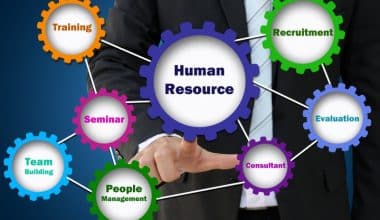Construction project management, whether it be for a shopping mall or a single-family home, is a highly planned endeavor requiring special skills. Construction project management, like any other project, has stages, from design to preparation to scheduling to the actual construction. Each of these steps is difficult enough on its own. However, when combined with the entire project, they become exponentially more complex. That is why project management software exists. Is project management software or tools, strong and dynamic enough to support the weight of a construction project? Before addressing that question, it’s important to first understand what construction project management entails.
What is Construction Project Management?
Construction project management, in a nutshell, is the method of overseeing construction projects. However, when comparing construction project management to other forms of project management, the main difference is that construction is mission-based. That is, the project’s organization concludes with the completion of the project’s construction.
Although project management is commonly described as managing resources during the life cycle of a project using various tools and methodologies to monitor scope, expense, time, quality, and so on. When working in the construction industry, your perspective must be broader.
It usually requires a broader range of constraints to consider that are unique to the design and development of construction projects. Throughout the life of a project, construction project management can engage with a wide range of skills and disciplines, from architecture to engineering to public works to city planning.
Construction Project Types
Depending on the construction market, there are several different types of construction projects. Construction is divided into two categories: residential and industrial. There can be up to four different types of projects depending on the sector:
- Residential home construction and renovation
- Heavy commercial building
- Construction of commercial and residential buildings
- Engineering building
That means we need construction management for a wide range of construction projects to be efficient. So, we need construction management for anything from a simple house to a large bridge, from dam engineering to an airport seismic retrofit project. Construction project managers, on the other hand, oversee the beginning and end of a project’s construction, frequently overseeing on-site to ensure secure and stable construction.
Construction Project Manager
A construction project manager is in charge of construction project management. This person is in charge of the construction project’s preparation, scheduling, budgeting, and supervision.
The construction project manager is in charge of the following responsibilities:
- Estimation and negotiation of costs for the project.
- Creating a budget.
- Make a calendar and work schedules.
- Organize work orders
- Determine the best approaches and techniques for the project.
- Communicate with clients and stakeholders, as necessary.
- On technical and contract specifics, lead or interface with employees, teams, and other construction careers.
- Collaborate with building, manufacturing, and regulatory experts.
Key Construction Project Management Skills
Construction project management necessitates a wide range of skills, as well as the ability to interact with a wide range of organizations and individuals in order to lead the project from concept to completion. It is important that construction project managers adhere to project management standards at all stages of the project.
#1. Creating and Launching the Project
You can’t begin a project unless you’re confident you’ll be able to complete it. The first step is to conduct due diligence to decide if the proposal is even feasible. How can you solve this? You can conduct a feasibility report, also known as a business plan, in which you examine the project’s goals, costs, and timetable to determine whether you have the resources to complete the project successfully under those constraints.
You can also describe the project’s rationale and ensure that it is sound. If this is the case, you can draft a project charter to help kickstart the project. During this management process, you will also identify potential issues and risks, and skills in the construction project.
#2. Defining and Planning the Project
Now that you’ve received approval, how are you going to achieve success? Outline the tasks within the schedule, taking note of project achievements. Also, take note of the resources required to complete those tasks within the budget constraints.
Make the strategy clear so that everyone is on the same page and knows what needs to be achieved during the project’s life cycle. This includes describing the project’s cost, scope, length, efficiency, and communications. This is also the time that you will be able to envision the best team for the project and begin the process of assembling it.
#3. Begin the Project
You are now carrying out the project, taking the plan, and putting it into action, along with all the changes and problems that can occur during such a period. Whatever deliverables you promised must be completed within the timeline you defined. You must now negotiate with partners, clients, and teams. Tasks must be completed in the latter, which necessitates workload management and resource allocation.
Throughout this point, you will be organizing meetings and reporting regularly. This is where the construction project management software will be put to the ultimate test, but more on that later.
#4. Monitor the Progress of the Project
You won’t be able to track the progress of your project if you don’t have a way to track it. This will be done during the previous stages of the project. However, it is significant enough to warrant its own stage of management. You’ll want a way to track progress, which is why you’ll need to establish key performance metrics for expense, time, and quality. If you can keep track of these numbers, you would be less likely to handle a failed project. As a result, remain adaptable and communicative throughout so that you can easily adapt to change when it happens, which it often does.
Processes for Managing Construction Projects
It is critical that construction project managers adhere to project management principles at all stages of the project life cycle. This will definitely help the project from inception to completion. Construction project management demands a wide range of abilities, as well as the ability to communicate with a wide range of agencies and people.
This will definitely help the project from inception to completion. Construction project management demands a wide range of abilities, as well as the ability to communicate with a wide range of agencies and people.
Start-up of the project
Before starting up a project, ensure it is practicable. You do this by determining the feasible nature of the business. You can’t begin a project unless you’re confident that you’ll be able to complete it. Also, you may discover potential concerns and hazards create a project charter
Planning a project
Having received approval, list out what you are expected to do. Make your project plan transparent so that everyone is on the same page and understands what has to be done throughout the project’s life cycle. This covers information about the project’s cost, scope, duration, quality, and communications. This is also the time when you’ll be able to envision the greatest project team for the job and start putting it together. The planning phase is possibly the most crucial project management phase and there is a need to have a handy document
that will guide the project execution
4 Stages of Construction Project Management
When managing a building project, there are a few goals to keep in mind. You get there in steps. You complete it by breaking it down, just like every other project. The four steps mentioned below will help you plan an effective construction project management project.
#1. Create a design
A building project is divided into four stages. It is the project manager’s duty to ensure that the design complies with building codes and other regulations.
- The concept
What are the project’s requirements, priorities, and objectives? You’ll make decisions based on the scale of the project, the construction site, and the actual design of what you’re constructing. This includes a list for each room or space under consideration, as well as all vital details.
- The conceptual design.
This is a drawing that shows all of the different pieces, materials, sizes, colors, textures, and so on. It includes the floorplan, elevations, and so on, as well as a site plan.
- Create the template.
This necessitates investigation. What materials should be used? What tools would be required for construction project management? How much do the components cost? To represent these decisions, you’ll be refining the original drawings from the previous level. Knowing and adhering to local building codes will be critical at this time.
- Gather the contract papers.
These are the actual building drawings and specifications. Outside vendors will use these to bid on the work.
#2. Construction planning
You’ll have these three steps to focus on once the bids are approved but before the ground is broken.
- Make a decision on a project manager.
If it hasn’t already been decided, do so now. A project manager may be brought on board early and engage in the early stages of a project.
- Determine the remaining workers.
Find a contract administrator, who will assist the project manager. You’ll also need a supervisor now to keep everything on track in terms of supplies, deliveries, and equipment. They are also on-site to oversee construction activities. Finally, you’ll need a field engineer, who will be more of an entry-level job dealing with paperwork.
- Investigate the location.
Check to see if you need anything. The building site must be ready, which could include coping with environmental concerns such as the suitability of the soil for construction.
#3. Procurement
You’ve got people, and you’ve arranged for the building and materials needed to finish it. You must now buy the required materials and equipment. Depending on the organization of the business doing the construction, this may be the responsibility of the general contractor or subcontractors.
At this stage, you’ll be dealing with purchase orders, which serve as a contract between the buyer and seller.
#4. The construction process
Finally, you’re ready to start building! But first, there is a preconstruction meeting to discuss operating hours, material handling, quality control, and site access. Then gather everybody and set up shop.
You’ll need to develop a payment plan as well as a mechanism for delivering them. This information must be made public to keep a happy and productive workforce and environment. Make your work orders as specific as possible to prevent misunderstandings between you and your contractors.
The project concludes when the construction is completed and the occupants move into or take ownership of the site. To make the contract official and binding, you must ensure that all of their conditions have been met usually providing a warranty period.
Construction Project Management Software
Construction project management software organizes construction project preparation, scheduling, building, resources, and reporting. It simplifies the process and boosts efficiency when adhering to a strict timetable and budget.
Software is intended to assist project managers in controlling every aspect of their projects through arranging their disparate parts and automating routines to increase efficiencies. A construction project management tool also keeps stakeholders up to date by disseminating data-heavy reports.
Because there are so many documents associated with any construction project, file storage and management is also key feature of construction project management software. You’ll also need real-time data to foster collaboration, plan, schedule, and manage resources. Microsoft Project is one of the most widely used construction project management software tools, but it has significant drawbacks.
Construction Project Management Software (Desktop vs. Online)
Once you’ve decided to use a software tool to control your building project, you must choose which one. Before you even get into the features, you need to decide whether a desktop or online version is best for you and your company’s needs.
There are definitely benefits of using a desktop application over online cloud-based applications. It boils down to two key factors: speed and security. Desktop applications are not dependent on the speed of your internet connection, and the lack of an internet connection adds an extra layer of security.
However, connectivity is a benefit of online construction project management software. Cloud-based software can be used both in the field and in the office.
In fact, teams can work together regardless of where they are or when they are working. This is especially useful for construction crews on the job site. That, along with real-time data that provides quick visibility into the project and informs better decision-making, demonstrates the industry’s dominance of online resources.
Furthermore, because online applications are stored in the cloud, a backup copy is always available.
Construction Project Management Software Features
- Gantt Diagrams
- Lists of Tasks
- Management of Resources
- Dashboards
- Observations
- Timetables
Create Construction Project Plans
Gantt charts organize tasks and display them on a visual timeline, allowing you to see the entire construction project at a glance. This allows you to estimate project duration, schedule resources, and link-dependent tasks that would otherwise cause bottlenecks later in the project.
Tools for Construction Project Management
You need the right tools to build a structure, and you also need the right tools to manage that structure.
Project management becomes much easier when you work with interactive online software construction. You build a platform for teams to collaborate on, and assigning tasks and tracking progress becomes much easier. You require the following features in a construction project management tool:
- Cloud computing
- Gantt graphs
- Organizing a team
- Dashboards
- Allocation and management of resources
- Lists of tasks
- Timetables
- Online document storage
- Email notifications
- App for mobile devices
#1. Gantt Diagrams
Gantt chart maker that can create a visual timeline for your construction project. It also makes it very easy to edit construction project schedules. To adjust the task’s deadline, simply drag and drop a taskbar. You can also see the actual progress in real-time as the taskbar is shaded each time the status is changed.
Look for a Gantt chart with task dependencies so that you can automatically associate dependent tasks like steel delivery with the construct process. As a result, everybody is aware of the status of the project’s various phases and aspects.
#2. Management of Resources
Other important features you’ll want are team scheduling and resource management, which will allow you to track the availability, skillset, expense, and allocation of your workforce and construction materials in real-time.
You can also monitor their workload and build schedules to help you handle team members’ hours, knowing when they’ll be out so you can prepare accordingly. It also aids in the monitoring of other services and their prices, such as the leasing of construction equipment.
#3. Timesheets
Timesheets are another method for managing the team’s hours. Your team will update their timesheets quickly no matter where they are, whether on-site or in the office. They upload in seconds, and managers can quickly review and approve anything with a single keystroke. You may also send them automatic emails when timesheets are due.
With cloud-based construction project management software, you can handle not only your team but also the numerous vendors you use on a construction project from anywhere and at any time. They can submit updates from the field, and you can monitor their progress, costs, and results.
How can construction project managers ensure the success of their projects?
Construction project managers can ensure the success of their projects by effectively managing risks, communicating effectively with the project team and stakeholders, and continuously monitoring and adjusting the project plan as needed. Additionally, they can prioritize quality, stay within budget, and effectively manage changes to the project scope to ensure a successful outcome.
What is the role of project closeout in construction project management?
The role of project closeout in construction project management is to ensure that all aspects of the project have been completed to the satisfaction of the stakeholders, that all final deliverables have been handed over, and that all loose ends have been tied up. This includes closing out contracts, conducting a final inspection, and completing any necessary paperwork.
How can construction project managers handle project delays?
Construction project managers can handle project delays by continuously monitoring the project schedule, identifying the root cause of the delay, and implementing a plan to get the project back on track. This may involve adjusting the project plan, re-allocating resources, or seeking additional support from stakeholders. Communication with the project team and stakeholders is also key to effectively managing project delays.
What is the role of cost control in construction project management?
The role of cost control in construction project management is to ensure that the project is completed within budget by monitoring actual costs against the project budget and taking corrective action as necessary. This may involve revising the project plan, negotiating with contractors and suppliers, or seeking additional funding.
What is the role of project scheduling in construction project management?
The role of project scheduling in construction project management is to create a timeline for the project, including the start and end dates for each task and the dependencies between tasks. This information is used to determine the critical path of the project and to ensure that the project is completed on time. Project scheduling is an ongoing process that is continuously updated as the project progresses.
How can construction project managers ensure that projects meet quality standards?
Construction project managers can ensure that projects meet quality standards by creating a detailed quality management plan, setting quality control procedures, and continuously monitoring the work of the project team. They can also conduct regular quality control inspections to ensure that work is being performed to the required standards, and they can take corrective action if necessary. Communication with the project team and stakeholders is also key to ensuring that projects meet quality standards.
In conclusion
Putting together a building project is a very difficult task. Some several skills and elements should be thoroughly examined for the construction project management team. That is why it is critical to entrust the management of your project to construction management software. It’ll make your life simpler while also allowing you to take your construction plan to a whole new level.
Construction Project Management FAQs
What is project management in the construction industry?
Construction project management involves directing and organizing each part of the project life cycle, from ideation to completion. It’s a holistic practice with the goal of delivering projects on time and under budget
How do I become a construction project manager?
Construction project managers are generally expected to obtain a bachelor’s degree in a construction-related field like building science, civil engineering or construction management. Earning a master’s degree in a construction-related field can increase career advancement opportunities
What are the steps to manage a construction project?
The Stages of Construction Project Management
- Design.
- Pre-Construction.
- Procurement.
- Construction.
- Commissioning.
- Owner Occupancy.
- Project Closeou
How do you monitor construction projects?
End-to-end management is the best way to monitor construction projects.
- Plan or help plan the project conception/design. …
- Break the project into phases. …
- Draw a time line after talking with the various contractors and securing commitments from each. …
- Start the construction with site preparation.
How do construction projects control costs?
Cost Control Techniques
- 1 – Planning the Project Budget. You would need to ideally make a budget at the beginning of the planning session with regard to the project at hand. …
- 2 – Keeping a Track of Costs. …
- 3 – Effective Time Management. …
- 4 – Project Change Control. …
- 5 – Use of Earned Value.






1 comment
Thanks for sharing valuable information!. Most construction project management software will help you organize your workflow, keep track of client communications, and manage projects. But if you want the most bang for your buck, find construction software that contains a document management feature and will make it easy to review data in order to improve your processes. Some tools offer reporting features that will give you insight into your productivity and inventory management.